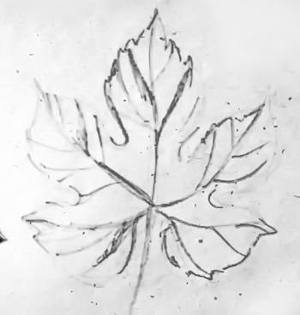Site sections
Editor's Choice:
- Maple Leaf Drawing Scheme
- Diseases of the musculoskeletal system and connective tissue
- Topic: White Blood Cell Physiology
- Daily teach to help and be grateful for help yourself
- Khachapuri with cheese - the best recipes
- The postulates of successful breeding sheflera at home
- Growing cyclamen from seeds
- What honey is not sugared: varieties, causes
- Symptoms, course, treatment and prevention
- Lecture Topic: Digestive System
Advertising
| Maple leaf drawing scheme. How to draw leaves |
|
A detailed lesson will help you learn how to draw leaves in stages with a pencil. Leaves are an indispensable element of any summer or autumn landscape. The nature on our planet is incredibly diverse, and therefore there are many varieties of leaves, so drawing them is always very interesting. It’s not difficult to draw leaves if you have very little time at your disposal, as well as suitable materials. We show how to draw leaves in pencil in stages. Try to draw with us, and you will definitely like the process and the result. So, to draw the leaves, we need a blank sheet of paper, a simple pencil and an eraser. First, mark up the sheet, draw the base, so that in the future it will be easy and convenient for us to draw. In this case, we draw a beautiful maple leaf, so the base will look like this. You will need only four lines to draw the base for the sheet.
Now we need the shape of the sheet so that the further drawing is neat and beautiful. Focusing on the previously depicted lines, we begin to draw cone-shaped figures, all in all, we should get five of them.
Next, we begin to draw the outline of the sheet on top of the sketch. The base lines should be barely noticeable, otherwise the leaf pattern will turn out dirty and ugly. Toothed outline of the leaves is not difficult to draw if you try. If it doesn’t work the first time, use the eraser, you can train on a draft until it starts to come out pretty.
Gradually draw the entire outline of the leaves. You should have something like this. Next, it will be necessary to arm again with an eraser and remove all unnecessary lines, leaving only the outline.
To make the painted leaves look natural, you need to draw a twig and veins. The veins will not be even, so just draw by hand, you should not use the ruler.
The final step will be coloring. You can draw leaves using colored pencils, watercolors, gouache and other materials, you can choose the ones that you like best. In the end, it turned out like this. The following picture shows how to draw beautiful tropical leaves in the shape of a heart.
There are many more ways to draw leaves. For example, if you are a beginner, you will like the doodle technique. To draw such leaves, you need paper and a pen.
Early autumn is a wonderful time that both children and adults like. There is such beauty around that it’s time to take an easel, paints, pencils and go to nature to do creative work. In the shades of this season, yellow paint predominates. See how many golden leaves in the forest! Autumn landscapes are one of the most impressive, and to depict them, it is worth starting small. How to draw a maple leaf? Let's do it step by step. Draw thinly, without strong pressure. If something does not work, you have to wash it - then dirt will remain on the sheet. It is better to use a well-sharpened simple pencil. It is not as difficult as it seems. Such a lesson will come in handy when you need to make decorations for the holiday of autumn or just capture a tree, a bird sitting on it, or any other autumn story. This drawing will be possible even for kids who have just learned to confidently hold a pencil in their hands. So, let's get to the phased work. Streaks and sectionsDraw a long vertical line - this is the axis of symmetry of the sheet. Visually divide it into three parts and, stepping back one third from the bottom, outline two more veins at an angle of about 45 degrees. At the bottom of the same point, draw two horizontal lines. Next, draw the lines between the veins. They are twice shorter than the previous lines.
Contour drawingIf the leaf in form is not quite even, it is not scary. On the contrary, the drawing will acquire originality and originality. Look at the real leaves - they are all different: small and large, symmetrical and not very. Show your imagination, do several curls between the veins. Starting from the point of their intersection, draw a short line down, then draw a sharp edge (denticle), curlicue, again a sharp edge, again a curlicue. On the tops of the veins, the edge should be depicted longer. Sheet decorationSmall veins give the sheet a finished look. They need to be drawn in several pieces on each large vein at an angle to it.
Core designTo draw a maple leaf correctly, mark in the center (near the intersection of the veins) a core in the form of curls. They will cross the veins at the very bottom. Maple leafJust depict a short stick extending downward. Do not forget to make it voluminous (mark the bottom with a circle).
Your drawing is ready! It remains only to paint this autumn leaf with paints. As the main color, you can use yellow with the addition of several red, green or brown spots. They will create bright accents and make the fall in the picture elegant and festive. Hello comrades! Of course, painting is best from nature. Draw a maple leafChildren, as a rule, having a sheet of maple in front of them, without any doubt begin to draw from the contour and carefully draw denticles: peaks and troughs like a cardiogram. Well, again, as a rule, the ends meet literally do not converge: starting to dance from the stove (petiole), you need to return to the starting point. And for this you need a PLAN! That is, you need to see the pattern by which these long and short cloves are distributed. And walk and sing blithely
So here we draw a sheet of maple from nature. Correct and similar. Sooooh, and who else got stuck here? The sheet is carved, five-lobed ... again maple !?
I note that the lower blades have such characteristic "ears". |
| Read: |
|---|
Popular:
How do leaves change in autumn
|
New
- Chicken fillet with porcini mushrooms in a pan
- What drugs lower cholesterol
- How to accelerate the healing of a leg fracture
- Plaque formation and composition
- How hair straighteners work
- Technological map of the lesson the structure of seeds of dicotyledonous plants
- Review of Old Testament Sexual Vocabulary
- After how much plaster is removed
- Lady's hand kissing allowance
- Summary of the lesson "first aid for bruises and fractures"


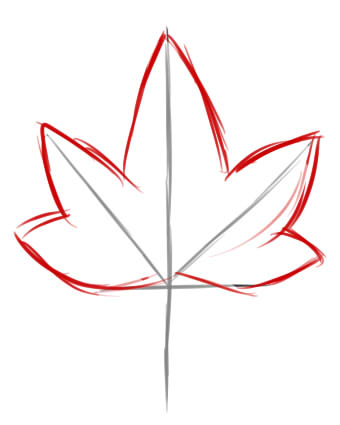


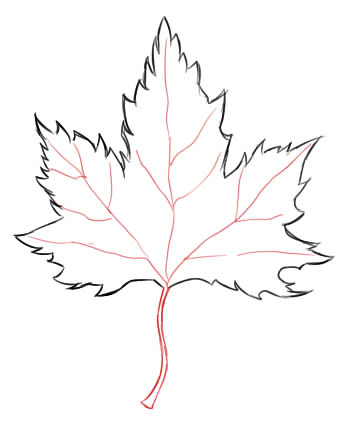
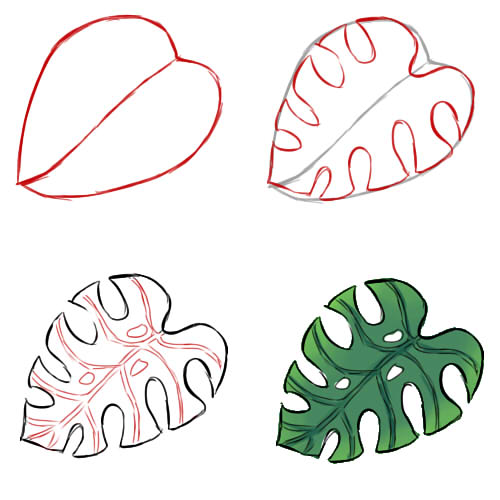

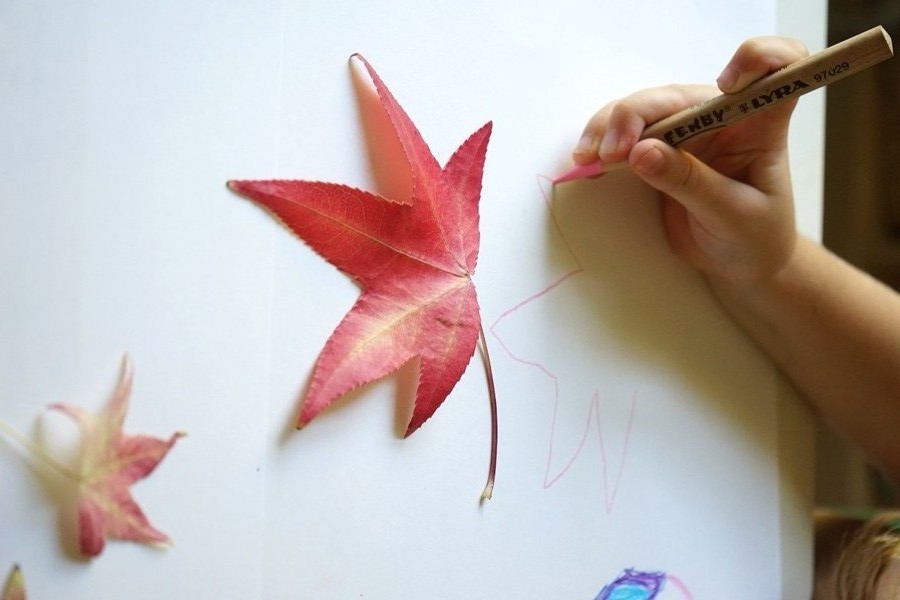
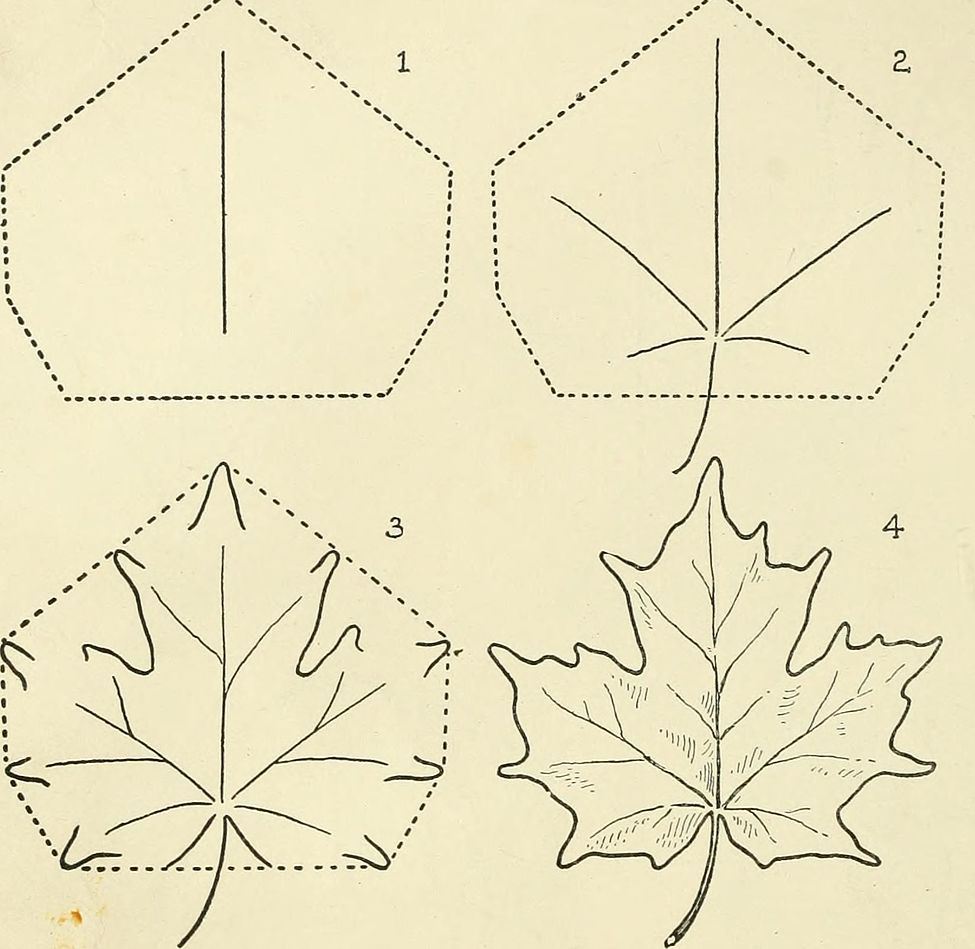
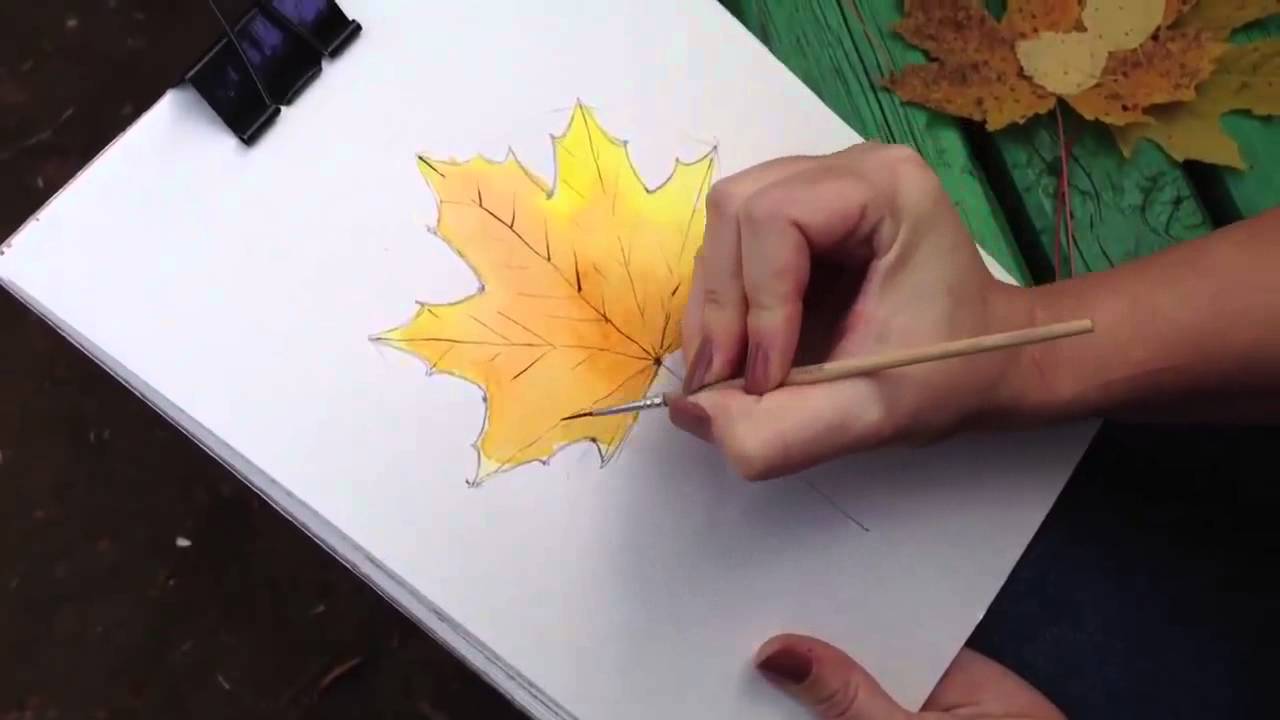
 We draw and carefully look: the petiole, then the middle vein, up and to the side, two veins are almost the same length as the middle and two more are almost on the same straight line, they are slightly shorter. Only five, and all come from one point. The main highway is. Having made sure that the angles between the veins are taken correctly and the proportions are also correct, we can proceed to drawing with a felt-tip pen.
We draw and carefully look: the petiole, then the middle vein, up and to the side, two veins are almost the same length as the middle and two more are almost on the same straight line, they are slightly shorter. Only five, and all come from one point. The main highway is. Having made sure that the angles between the veins are taken correctly and the proportions are also correct, we can proceed to drawing with a felt-tip pen.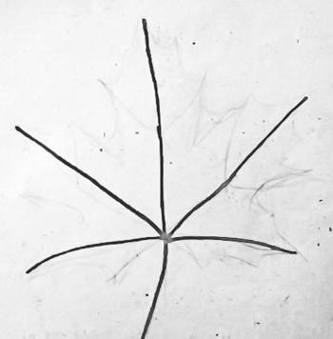 Now you can draw the side ones: smaller veins extend from the upper three veins from about the middle. On the lower veins of these minor branches less.
Now you can draw the side ones: smaller veins extend from the upper three veins from about the middle. On the lower veins of these minor branches less.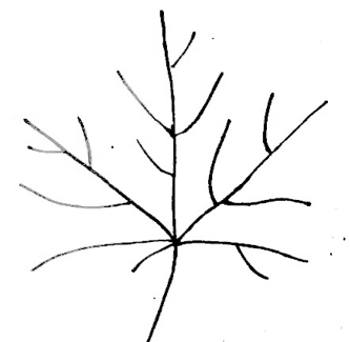 The plan of the internal structure of the maple leaf is made. Now it is time to draw the outline. The ends of the veins go into the cloves.
The plan of the internal structure of the maple leaf is made. Now it is time to draw the outline. The ends of the veins go into the cloves. 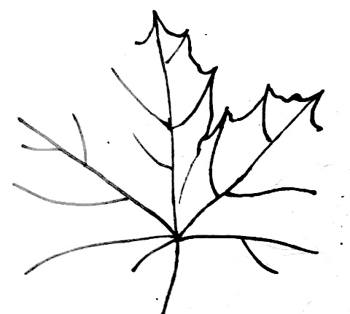 Our sheet, in fact, looks pretty symmetrical, but in nature a complete pattern is rarely found, and if you look closely, it can be seen that the halves are not strictly mirrored.
Our sheet, in fact, looks pretty symmetrical, but in nature a complete pattern is rarely found, and if you look closely, it can be seen that the halves are not strictly mirrored. And since we are drawing this particular sheet, we will make sure that the number and length of denticles and the depth of the depressions between the blades are exactly like that of our sheet.
And since we are drawing this particular sheet, we will make sure that the number and length of denticles and the depth of the depressions between the blades are exactly like that of our sheet.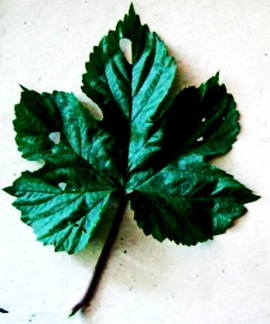 If we were to draw a maple leaf in our imagination, we could well take this leaf as a maple leaf. But no, taking advantage of some external similarities, Hops are rubbed into our trust here! Hmm, if he promises to lead a sober lifestyle, then we will agree to draw his sheet as a warning to ancestors and descendants. In his own way, he is no worse than maple, beautiful and carved.
If we were to draw a maple leaf in our imagination, we could well take this leaf as a maple leaf. But no, taking advantage of some external similarities, Hops are rubbed into our trust here! Hmm, if he promises to lead a sober lifestyle, then we will agree to draw his sheet as a warning to ancestors and descendants. In his own way, he is no worse than maple, beautiful and carved. 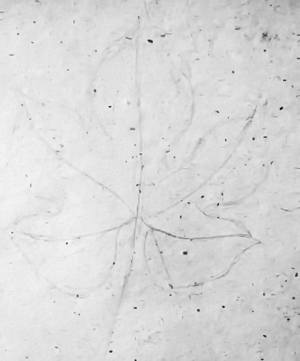 Especially large cloves are not here and we will begin to draw a contour.
Especially large cloves are not here and we will begin to draw a contour.